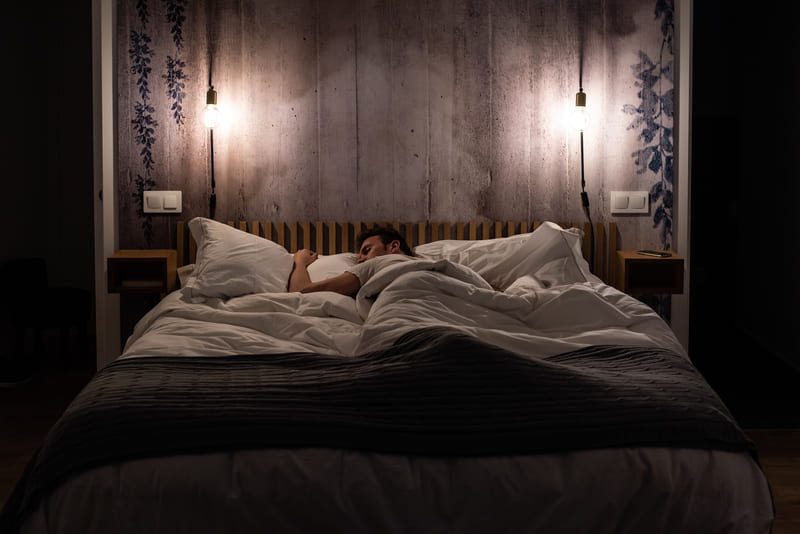Sleep is a critical component of our daily lives, influencing our health and well-being. It is a process that can be significantly affected by our environment, particularly the lighting conditions in our bedrooms. Understanding the impact of light on sleep can help us create optimal conditions for restful slumber.
Research suggests that specific light colors can influence the body’s circadian rhythms and the production of melatonin, the sleep hormone. Warmer hues of red, orange, and yellow have been recommended for sleep preparation, while blue light, typically emitted by screens and electronic devices, is known to suppress melatonin and can disrupt sleep patterns. Thus, selecting the best light for sleeping is essential for promoting quality sleep.
Key Takeaways
- Light is critical in regulating sleep and can affect the body’s internal clock.
- Warmer light colors benefit sleep, while blue light can be disruptive.
- It is essential to create a sleep-conducive environment by managing bedroom lighting.
Table of Contents
The Science of Light and Sleep
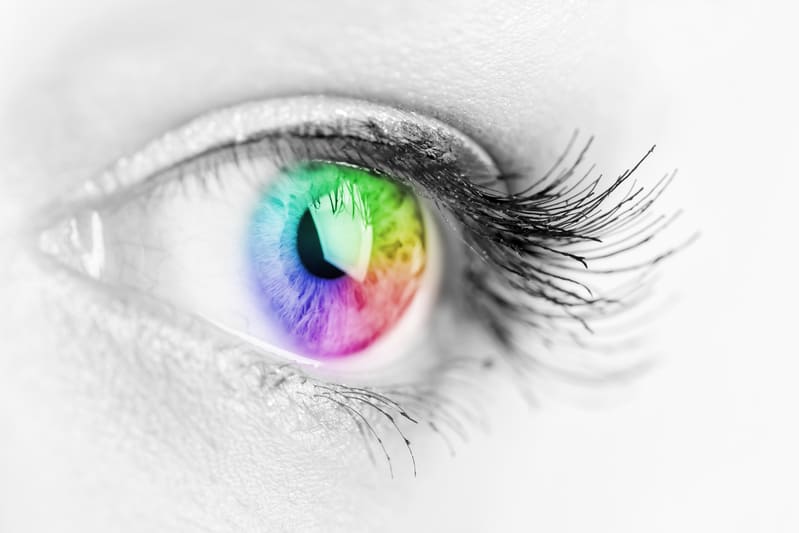
Understanding how light affects sleep involves exploring its impact on circadian rhythm and the production of sleep-related hormones like melatonin. Research sheds light on the significant influence that specific wavelengths of light have on sleep quality.
Effects of Light on Circadian Rhythm
The human circadian rhythm, an internal 24-hour clock, regulates the sleep-wake cycle and is highly sensitive to environmental light. Light is the principal cue influencing circadian rhythms, signaling to the body when it’s time to wake up and prepare for sleep. Studies emphasize that irregular light exposure can disrupt this cycle, potentially leading to sleep disorders.
Influence of Blue Light on Sleep Quality
Blue light, prevalent in electronic devices like smartphones and computers, has been shown to impair sleep quality by delaying the release of melatonin, the hormone responsible for inducing sleepiness. Limiting exposure to blue light, especially during the evening, is crucial for preserving a healthy sleep-wake cycle.
Red Light Therapy and Melatonin Production
Red light therapy minimizes melatonin production, making it a potential aid for maintaining sleep quality. Evidence suggests that red wavelengths do not suppress melatonin as blue light does, which could make red light a better option in the evenings.
Research on Light Exposure and Sleep Cycles
Recent research has delved into how different colors of light affect sleep. Gentle, warm lights may be conducive to better sleep by triggering proper transitions between sleep cycles and supporting sustained periods of deep restorative sleep. In contrast, excessive or particular types of light can disrupt these cycles, leading to fragmented and poor-quality sleep.
Optimizing Bedroom Lighting for Sleep
The bedroom’s lighting setup can significantly influence sleep quality. This section will explore selecting the correct type of light, the importance of darkness, and using adjustable brightness to create an optimal sleep environment.
Selecting The Best Night Light
Choosing night light is crucial, as some light colors can interfere with sleep. Red light is considered beneficial for sleep, as it has minimal effect on the circadian rhythm. When selecting a night light, one should aim for a fixture that emits red light, potentially leading to better quality sleep and a smoother transition into the rest phase.
The Role of Darkness in the Sleep Cycle
Complete darkness is often advised for a restful night’s sleep because it signals the body to produce melatonin, a hormone that promotes sleep. Light exposure, particularly from white light sources, can suppress melatonin production and disrupt the sleep cycle. Therefore, limiting exposure to bright light before bedtime is vital to maintaining healthy sleep patterns.
Adjustable Brightness for Ambient Light
Ambient lighting with adjustable brightness offers flexibility in controlling the sleep environment. Dimmer switches or smart lighting can gradually reduce brightness levels, mimicking the natural sunset and preparing the body for sleep. This adaptability helps maintain the desired light intensity, ensuring the bedroom’s lighting is conducive to rest without disruption.
Health Implications of Light During Sleep
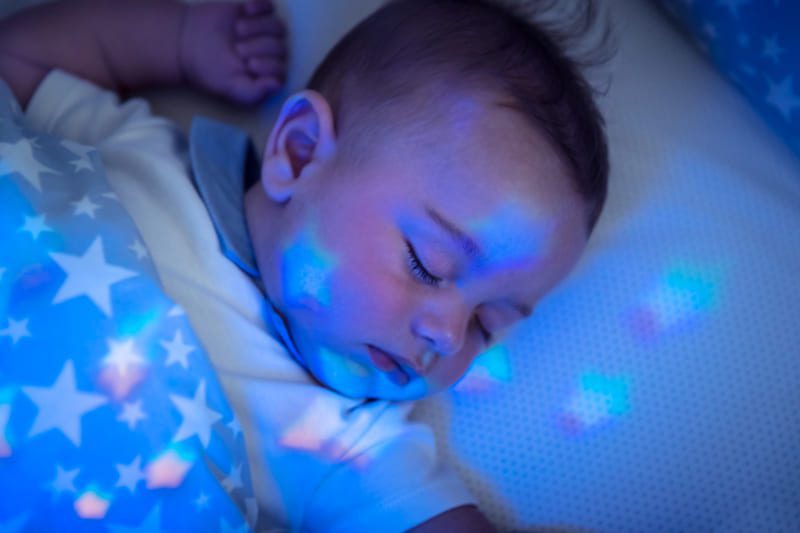
Exposure to light during sleep can significantly impact health, particularly in areas such as children’s development, mental health conditions like depression and anxiety, and broader issues related to light pollution.
Impact on Children’s Sleep
Children are susceptible to the effects of light during sleep. Artificial light, especially from screens, can disrupt children’s sleep levels, potentially delaying their sleep time. Particular light colors, such as blue light, can reduce melatonin production, which is critical for regulating sleep-wake cycles in children and adults.
Association with Depression and Anxiety
The presence of light during sleep has been linked to depression, with non-natural light potentially influencing one’s mood. Research has noted an association where even dim light exposure can alter brain chemistry, thereby increasing the risk for symptoms associated with depression and anxiety.
Consequences of Light Pollution on Health
Light pollution extends beyond individual health and speaks to a societal issue impacting many. Inadequate darkness due to light pollution can lead to disrupted circadian rhythms and poor sleep quality. A dimly lit sleep environment may elevate the risk for high blood pressure and is linked to an increase in heart rate, suggesting implications for cardiovascular health.
Light Selection for Different Needs
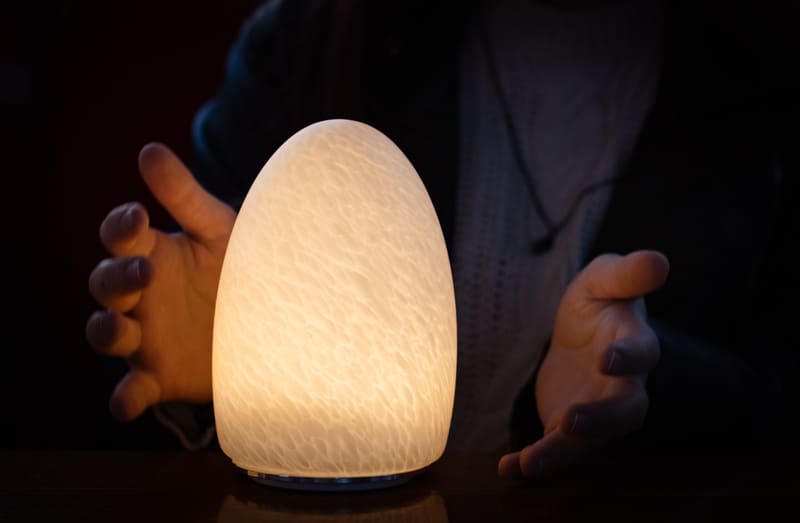
The right type of lighting can profoundly impact sleep quality, from comforting infants through the night to assisting adults with jet lag to supporting those who deal with seasonal depression. Specific colors and designs play pivotal roles in the effectiveness of these lights.
Choosing Night Lights for Babies
Babies benefit from a night light that emits a soft, red hue. Red light is the best color for sleep as it doesn’t inhibit melatonin production, which is essential for a baby’s sleep cycle. Design is also crucial; a night light for a baby’s room should be designed to provide sufficient light for safety and feeding without being stimulating or disruptive.
Best Practices for Adults Suffering from Jet Lag
For adults experiencing jet lag after traveling across multiple time zones, exposure to bright white or blue light in the morning can help reset their internal clock. Conversely, one should use lights emitting warm yellow or red tint to encourage restfulness in the evening. Products offering customizable light settings can be highly beneficial in managing jet lag symptoms.
Light Options for Seasonal Depression Relief
Individuals facing seasonal depression may find relief with light therapy, which simulates natural daylight. It can help to regulate the body’s circadian rhythm and improve mood. A light therapy box with a brightness of at least 10,000 lux is generally recommended for treating Seasonal Affective Disorder (SAD). The design of such therapy lights must filter out UV rays to protect eyes and skin from damage.
Understanding Types and Features of Night Lights
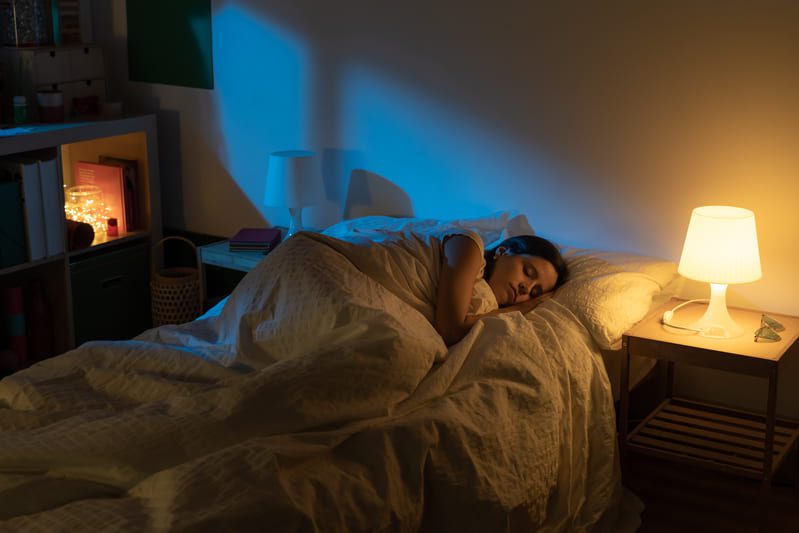
Choosing the proper night light can enhance sleep quality by providing the right balance of visibility and comfort. When exploring the variety of night lights, it’s important to consider the type of light it emits and the design features contributing to safety and convenience.
Key Features in Modern LED Night Lights
Modern LED night lights are favored for their energy efficiency and longevity. They often come with features such as motion sensors for automatic activation and dimmers to adjust brightness levels. For instance, the AMIR Motion Sensor Night Light is lauded for its convenient motion-sensing capabilities. LED technology also allows various color settings, which benefits those who prefer certain light hues at night.
Warm Versus Cool Light Tones
The color temperature of night lights is a crucial factor affecting sleep. Warm colors, akin to the hues of a setting sun, are believed to be more conducive to sleep than cool tones. Warm light, characterized by orange and yellowish hues, is less likely to disrupt sleep patterns as it does not inhibit the production of melatonin, the sleep hormone. Cool light, like the midday sun, can interfere with melatonin production.
Safety and Design Considerations
When selecting night lights, it is critical to consider safety and design. Night lights should be constructed with non-toxic materials and designed not to overheat. Additionally, versatile designs such as the Westinghouse 4-in-1 LED Night Light, which can function as a flashlight or table light, offer more value. Their design should include features that prevent the light from being a trip hazard, and they should be bright enough to navigate by without being overly invasive.
Practical Advice for Minimizing Light Exposure
To ensure restful sleep, it is essential to manage light exposure effectively. This can be achieved by focusing on three key areas: managing electronic usage before bedtime, creating an ambiance conducive to relaxation, and finding suitable substitutes for light-emitting devices.
Managing Electronics and Screen Time Before Bed
Exposure to screens, particularly before bed, can significantly disrupt sleep. Screens from telephones, computers, and televisions emit blue light, which can suppress melatonin production—a hormone that helps regulate sleep. Avoiding electronics for at least 30 to 60 minutes before bedtime is recommended. For those who must use devices in the evening, activating settings that filter blue light or using apps that provide a warmer light spectrum can be beneficial.
Creating a Relaxing Nighttime Environment
Creating a tranquil environment in the bedroom can help minimize light intrusion and encourage relaxation. Utilizing dim, yellow light sources, like bedside lamps with low-wattage bulbs, helps create a more calming atmosphere. Ensure that the room is as dark as possible when it is time to sleep; blackout curtains or sleep masks can effectively block unwanted light. A calm, quiet, and comfortable setting reduces light and solidifies a routine, signaling it is time for bed.
Alternatives to Light-Producing Devices
Exploring alternatives is vital for those accustomed to falling asleep with the TV on or using devices in bed. Books or audio relaxation techniques can be excellent pre-sleep activities without disruptive light. Consider light-free options like meditating or practicing deep-breathing exercises to create a sense of twilight calm before attempting to sleep. These practices avoid light and contribute to overall well-being and sleep quality.
The Future of Sleep and Light Technology
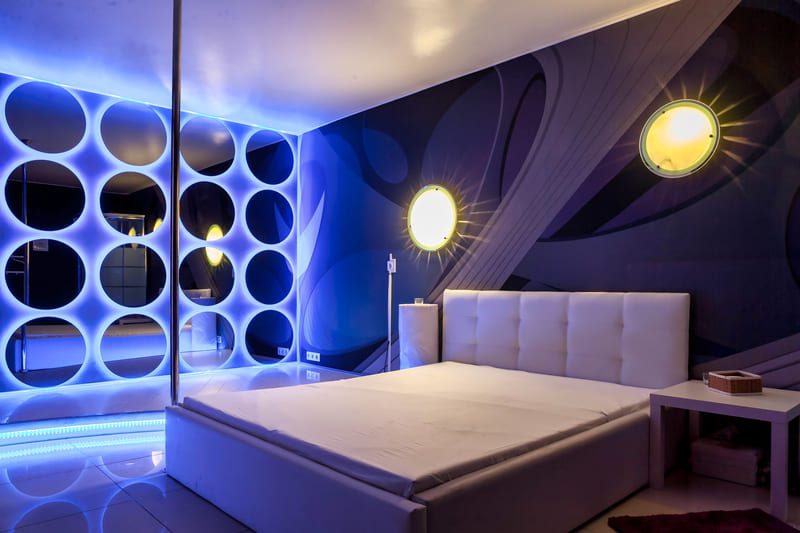
The convergence of sleep science and light technology heralds a new era where personalized lighting is integral to sleep health optimization.
Innovative Light Technology and Sleep Research
Research indicates a data-driven revolution in sleep science, specifically through the development of technology that adjusts to sleep cycles and light exposure. Studies have demonstrated how varying wavelengths of light impact sleep quality, driving innovation in light-based sleep aids.
Smart Lighting and Personalized Sleep Environments
Intelligent lighting systems use sensors and AI to adapt to an individual’s sleep patterns, adjusting brightness and color temperature in response to natural sleep-wake cycles. This adaptability provides tailored sleep environments, potentially enhancing the quality of sleep. As innovative technology becomes more advanced, the ability to create a personalized sleep-inducing environment is becoming an accessible reality for many.
Advancements in Portable and Rechargeable Lights
The market now offers portable and rechargeable light solutions designed for energy efficiency and convenience. These advancements make it possible to maintain a consistent sleep environment, even while traveling, ensuring that the benefits of optimized light exposure are always within reach.
Supplementary Sleep Aids and Accessories

The environment is key to a restful night’s sleep. Incorporating sleep aids and accessories like blackout curtains and sleep masks can significantly enhance sleep quality. Sound machines offer an auditory sanctuary for the mind, and recent gadgetry introduces innovative means to support sleep cycles.
The Use of Sleep Masks and Blackout Curtains
Individuals with insomnia often struggle to maintain a dark, conducive sleep environment. Blackout curtains are a significant ally in blocking intrusive streetlights or daylight, offering an oasis of darkness. Similarly, a well-designed eye mask can provide personalized darkness, which is crucial for triggering the brain’s sleep mechanisms. These aids are particularly effective in achieving deep sleep, as they mitigate disruptions caused by white lights and LED lights.
Sound Machines and Their Effect on Sleep
Sound machines have been shown to promote better sleep by providing a consistent auditory backdrop that can mask distracting noise. Their calming sounds, ranging from white noise to natural ambiance, help individuals fall asleep faster and wake up less at night. Sound machines are a non-invasive tool for those battling insomnia to support a restful night’s sleep.
Emerging Trends in Sleep-Aiding Gadgets
Advancements in sleep technology have ushered in gadgets that elevate the sleeping experience. Innovative products range from sleep trackers that sync with LED lights to emit a warm light as you wind down to innovative pillows that adjust to your sleeping position. These gadgets work in unison to create an ideal environment for sleep by addressing both physical and sensory aspects that contribute to relaxation and the natural sleep rhythm.
Conclusion
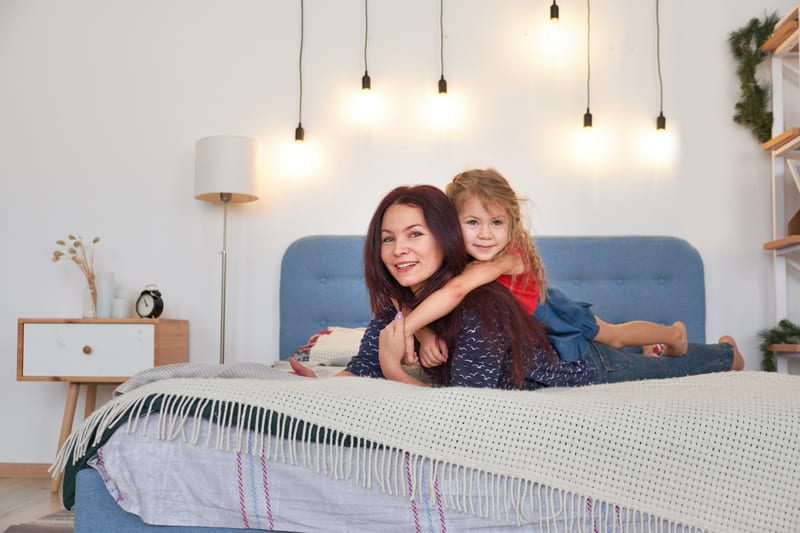
When selecting the optimal light color for sleep, research and recommendations converge on warm colors, emphasizing red tones as being most conducive to a good night’s rest. These hues are less likely to interfere with the body’s natural sleep cycle, known as the circadian rhythm than their blue and green counterparts.
It is well-documented that exposure to red light at night is less disruptive to melatonin production, an essential hormone for regulating sleep. The Sleep Foundation highlights the benefits of using lights in the red-to-yellow spectrum to prepare the body for sleep.
Conversely, blue light during the evening is associated with difficulty falling asleep, which can hinder melatonin secretion. For those who require illumination during nighttime, choosing a light source with a red hue is advised, as it is superior in preserving the natural sleep-wake cycle.
Light color can also impact children’s sleep, with studies finding that specific colors can influence their sleepiness levels differently. Hence, yellow light may be practical, especially in a child’s bedroom environment, to support better sleep quality.
In summary, the ideal lighting situation for bedtime is darkness; however, red and yellow lights are preferred if light is necessary to enhance sleep quality. Natural sunlight exposure during the day is also essential to maintain a healthy circadian rhythm and aid in feeling sleepy when bedtime approaches.
Frequently Asked Questions
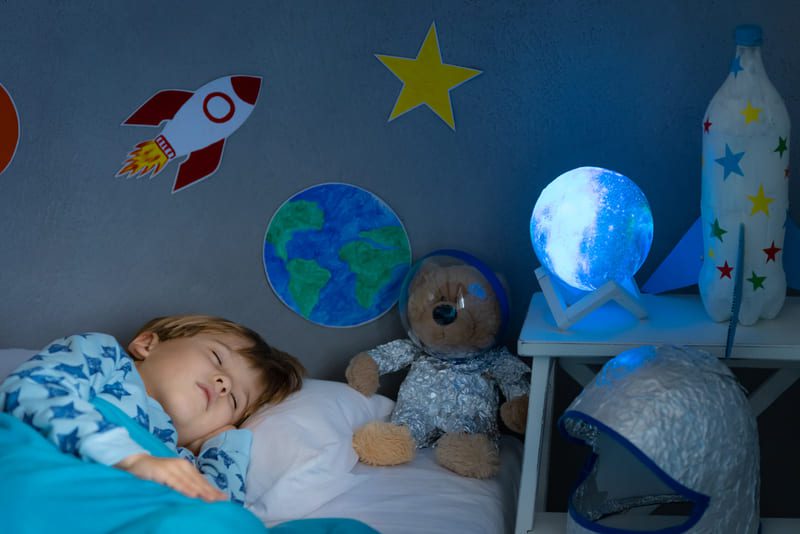
Choosing the right light for sleep is essential, as the color and intensity of light can significantly impact the quality of rest one gets—the questions below address common inquiries regarding the best lighting conditions for sleep.
Which color of night light is most conducive to a good night’s sleep?
Studies suggest that warmer colors like red, amber, or yellow are most conducive to a good night’s sleep as they have lower levels of blue and green light.
Are there specific LED light colors that promote better sleep quality?
LED lights emitting red wavelength are considered beneficial for sleep as they have the most negligible impact on melatonin production, which is crucial for regulating sleep cycles.
How does red light therapy affect sleep patterns?
Red light therapy can positively affect sleep patterns by aiding in melatonin production, which helps regulate the sleep-wake cycle.
What light characteristics should be considered for a sleep-friendly bedroom environment?
When creating a sleep-friendly bedroom environment, one should consider using dim lights, emitting longer wavelengths, and having limited exposure to blue and green light frequencies, which can disrupt sleep.
Can green light benefit sleep, and how does it compare to other colors?
While green light is typically considered disruptive for sleep due to its position on the light spectrum, some research indicates it might aid in managing pain, which can indirectly contribute to better sleep for individuals suffering from chronic pain.
Why might blue light be detrimental to sleep, and are there alternatives?
Blue light is known to hinder the production of melatonin, which is detrimental to sleep. Lights with red or orange hues are better alternatives, as they have minimal effect on sleep cycles.

